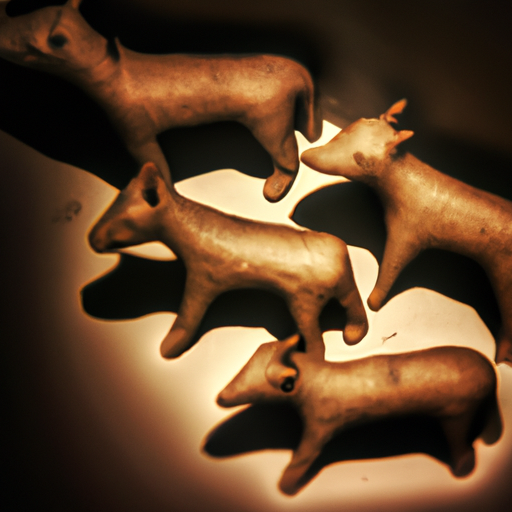“`markdown
What Did Dogs Look Like 1,000 Years Ago?
A Journey Back in Time
You may have looked at your beloved pup and wondered, what would their ancestors have looked like? Let’s take a fascinating journey back in time, to a world a millennium ago, when dogs were not just our faithful companions, but our survival partners as well. We will delve into their physical appearance, their roles in society, and how selective breeding has changed them over time.
The Physical Appearance of Dogs in the Past
While it’s difficult to paint a perfect picture of what dogs looked like 1,000 years ago, historical records give us some intriguing insights. Dogs of the past were likely leaner and more muscular, built for survival rather than companionship.
- Size and Shape: Most dogs were medium-sized with a robust build, much like today’s pariah dogs or village dogs that live on the outskirts of human settlements.
- Coat: Depending on the climate they lived in, dogs had either short, sleek coats for warmer climates, or thick, double coats for colder climates.
- Color: Dogs had a range of coat colors, but they were generally muted earth tones, which provided camouflage in nature.
The Role of Dogs in Society
Dogs held a special place in human society even 1,000 years ago. They were hunting partners, herders, and protectors. Their loyalty and intelligence made them indispensable companions in a world where survival was a daily struggle.
- Hunting Companions: Dogs were invaluable for tracking and holding game for hunters.
- Livestock Guardians: Larger breeds were used to protect livestock from predators.
- Rodent Controllers: Smaller breeds were used in homes and granaries to control rodent populations.
The Impact of Selective Breeding
Despite the romance of the past, it’s necessary to understand the impact of selective breeding on dogs. Over the centuries, humans have bred dogs to accentuate certain physical traits and behaviors, often at the cost of their health.
| Breed | Health Issues |
|---|---|
| English Bulldog | Respiratory and Joint Issues |
| German Shepherd | Hip Dysplasia |
| Pug | Eye Problems |
How Dogs Have Evolved Over Time
Over time, the relationship between humans and dogs has evolved from one of survival to companionship. Today, dogs come in an astonishing variety of shapes and sizes, each breed with its unique characteristics and traits. This is a testament to the enduring bond between man and dog, an alliance that has stood the test of time.
Frequently Asked Questions
-
Did dogs look the same all over the world 1,000 years ago?
No, dogs would have varied in appearance based on their geographical location and the roles they played in human societies. -
Did ancient dogs have breed distinctions like today?
Not in the way we understand them today. Dogs were bred for specific purposes, but the concept of standardized breeds is relatively modern. -
Has selective breeding been beneficial for dogs?
While it has led to a rich diversity of breeds, selective breeding has also introduced numerous health issues in dogs. It’s a topic with pros and cons.
“`



